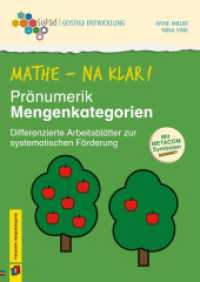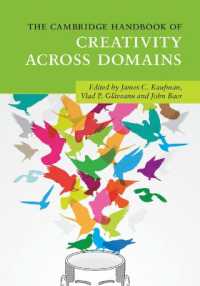- ホーム
- > 洋書
- > 英文書
- > History / World
Full Description
The first interdisciplinary exploration of eighteenth-century Glasgow
Approaches Glasgow's history as a guide to the cultural memory of the city read through traditional historical and literary analysis
Engages with primary sources such as contemporary literature, journalism, and ephemera from a range of institutions and archives
Sets out a methodological blueprint for new research into other cities or civic spaces
This book provides a long overdue reading of Scotland's largest city as it was during the long eighteenth century. These formative years of Enlightenment, caught between the tumultuous ages of the Reformation and the Industrial Revolution, cast Glasgow in a new and vibrant light. Far from being a dusty metropolis lying in wait for the famous age of shipbuilding, Glasgow was already an imperial hub: as implicated in mass migration and slavery as it was in civic growth and social progression. Craig Lamont incorporates case studies such as the Scottish Enlightenment, the Transatlantic Slave Trade and Eighteenth Century Print Culture to investigate how the city was shaped by the emergence of new trades and new ventures in philosophy, fine art, science, and religion. The book merges historical, literary and memory studies to provide an original blueprint for new research into other cities or civic spaces.
Contents
List of Figures; Acknowledgements; Timeline of Georgian Glasgow; Plan of the City of Glasgow (1778) Introduction Part I Georgian Glasgow1 Georgian Glasgow: A History Part II Remembering the Glasgow Enlightenment2 Glasgow as a Centre for the Arts, Science and Medicine 3 'Unimpaired remembrance reigns' Part III Empire and the Displacement of Memory4 'That Barbarous Traffic' 5 'Then went forth our Scots' Part IV Commemorating Glasgow as 'The Second City'6 Literary Tourists and Soldier Heroes 7 The Great Exhibitions: 1888-1938 Conclusion Bibliography; Index








